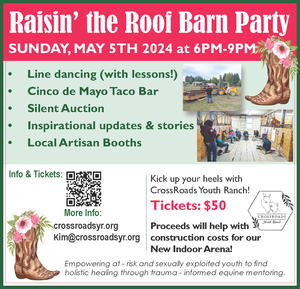Climate resilience needed in the Skagit
March 15, 2023
Maybe the 50 or so people attending the Climate Resilience conversation Sunday at the Anacortes Senior Center did not provide $7,500 worth of advice for changing the trajectory Skagit County residents – and everyone – are facing as the climate changes. But facilitator Dave Peterson made that unscientific estimate at the meeting’s end. The University of Washington forestry professor is with the Skagit Climate Science Consortium, scientists working with local people to assess, plan and adapt to climate related impacts.
“Where do we go from here?” was the question before the community of activists. “Here” is a place already markedly changed, Guillaume Mauger and Roger Fuller told them. Mauger, a research scientist with the University of Washington’s Climate Impacts Group, spoke to La Conner farmers and merchants March 6.
Sunday Mauger shared data, graphs and photographs tracking climatic impacts on the Skagit River watershed. Sea level rise, wetter winters, drier summers, wildfires and stream flow shifts are all occurring. “The canary in the coal mine, the big one, is the declining snowpack,” he said, showing photos of up to 25% loss in the Cascades since 1950, with projections of 50% loss by 2080.
Mountain snow is the county’s biggest reservoir. With the system out of equilibrium, bigger floods and drier summers are coming Mauger showed in graphs. It is a massive change in hydrology, with a 100 year flood that covers the Burlington Walmart parking lot predicted to happen every 22 years by 2050.
“Don’t get lost in the weeds” of data or predictions, he warned. “The important thing is to do something.” He held up The Port of Skagit developing a climate resilience plan and the Skagit Council of Governments, SCOG, representing county municipalities, for listening.

Richard Fuller, the natural resource coordinator at Padilla Bay National Estuarine Research Reserve, with 20 years of experience, showed slides of climate change’s impact on coastal areas, including. the effects of the Dec. 27 flood on Samish Island Road crossing the isthmus and a Padilla Bay saltmarsh. He solicited from the group a long list of significant damage flooding causes to natural and manmade systems.
Sea level rise combines with river flooding, he noted, so that a high tide can influence the Skagit River water level east to downtown Mount Vernon.
Brian McDaniel, water system manage for the City of Anacortes, discussed the benefit of 10 year water system planning mandated by the state Preparing for climate change is incorporated into the design.
The second hour was spent in small groups of six to eight, each sharing their primary concerns of climate change impacts locally on water resources and considering near term actions to increase resiliency.
A La Conner contingent of John Leaver, Terry Nelson and Bob Raymond worked together. MaryLee Chamberlain also attended. All are leaders with the Skagit Valley Clean Energy Cooperative and that topic dominated the group the men were in. Nelson answered the question of taking three steps to increase resilience in the next year: “Put in as much solar as you can.” Raymond advocated for better coordination among environmental and justice advocacy organizations and SCOG.
The groups came together and reported their discussions. More education, ecosystem health, supporting existing organizations, coordination between local and state governments to increase solutions, the county taking a more holistic approach to planning, emphasizing prevention versus reacting after a natural disaster and the cost of inaction – of fixes post catastrophe instead of investing ahead were among solutions shared.
Christie Stewart Stein, from host Indivisible Skagit, the group that organized the session, told the gathering “We are sitting in the middle of the impact we have been long predicting. How can science inform our actions? We can find ourselves hopeful where we live now.”

Peterson echoed that in closing the afternoon:,calling for more conversations, more action and focusing on these issues more in the next year.
Mauger’s mantra was repeated: “The best thing is to do something and something simple.”







Reader Comments(0)